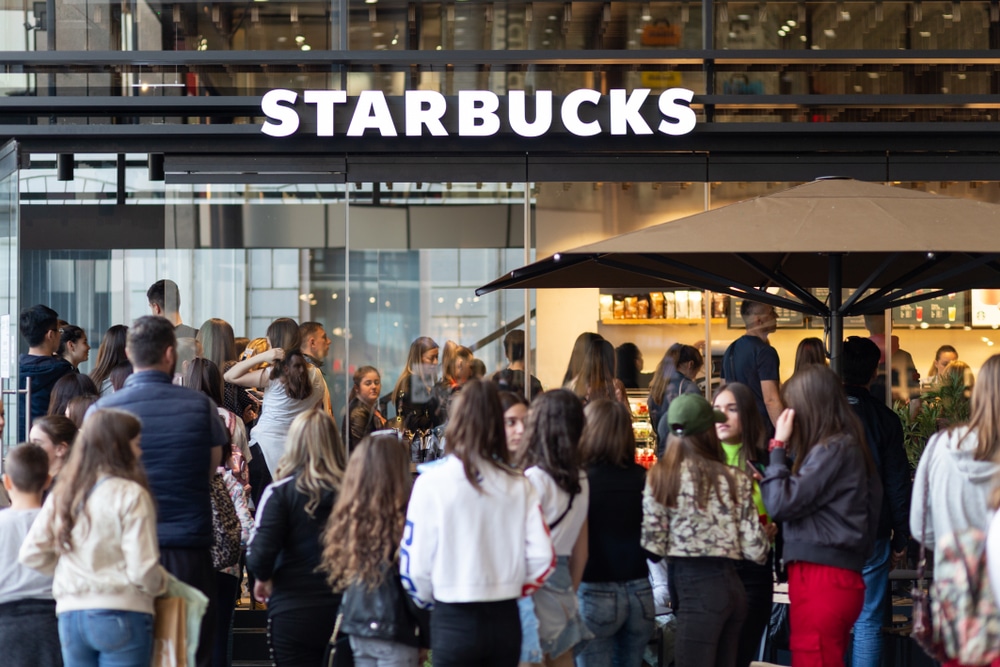When understanding how to build brand affinity, one must understand the difference between loyalty and affinity. Continue reading “How to build brand affinity: Why your brand’s “personality” matters”
Category: Marketing
How retailers can leverage millennial buying power to boost sales in 2020

How retailers can leverage millennial buying power to boost sales in 2020
Retailers have realized that our youngest generations are looking for a totally new way to shop—and they have the power to vote with their dollars and make their voices heard. As a result, the following strategies have emerged as promising ways to harness Gen Z and millennial buying power and boost sales in 2020 and beyond.
Ways to Leverage Millennial Buying Power to Boost Sales
Cash In on Convenience
More than any other generation, millennials expect a shopping experience based on convenience. This generation grew up with Amazon and Netflix, and have grown to expect instant gratification from the retailers they frequent. Forty percent of millennials are parents—young parents—who don’t have time to waste on lengthy errands. A buy-online-pickup-in-store strategy is one of the best ways to optimize for speed and convenience in the era of overnight shipping.
- Prioritize website speed above all else. Consumers still use computers to online shop—but many individual retailers’ sites are slow to load and cumbersome to navigate. Clean up the back end of your website and streamline your sitemap so visitors can find what they need and load every page more quickly. This will also do wonders for your SEO and SERP presence.
- Optimize UX for all mobile interactions. Make sure that your website isn’t just mobile-responsive, but mobile-first. Improve UX for your proprietary branded app. And make sure that all direct-to-purchase pathways from Instagram or Facebook are clean and lightning-fast. If you make your customers wade through a clunky UX, you might lose them.
- Make the in-store experience fast and easy. BOPIS best practices dictate putting the pick-up station right up front in a prominent and immediately-accessible part of the store. Streamline logistics so that orders are ready at the time you say they will be, and shoot for same-day order fulfillment (or three hours, if you can make it).
- Provide real-time product availability. Surprisingly, 89% of millennials say that their choice of retail stores would be influenced by having access to real-time product availability data. When your bottom-of-the-funnel customer has the option of visiting your store or one of your local competitors, this could be the differentiating factor for you getting that sale.
Invest Wisely in Social Media
Millennials spend an incredible amount of online time on social media platforms, so brands immediately want to establish a presence there. That much is obvious. However, certain social media strategies work better than others, especially for retailers in the CPG sector. Below we discuss how to optimize three intersecting aspects of your social media strategy: ads, influencers, and your own accounts.
Social Media Ads
Sixty-three percent of U.S. millennials use ad blockers when browsing and shopping online—and for good reason. Display and pop-up ads are intrusive and obnoxious to many, especially those who spend a lot of their free time online. In-app video ads on Facebook and Instagram stories (and streaming platforms like YouTube) tend to appear less annoying, as do in-feed image-based ads. By choosing wisely and investing in retargeting, you can use social media ads without alienating your audience.
Influencer Marketing
Seventy-four percent of millennials report that their shopping is influenced by social media, and this could be attributed to the diligent work of influencers. Retailers have a lot to gain from partnering with micro-influencers, in particular in 2020, to deliver targeted content to their most valuable customers. Smaller content creators are most likely to appreciate the support from a large brand, and to agree to publish sponsored content on a regular basis. Building out a wide base of many micro-influencers will often perform better than one star contract.
Adding Value
In general, most millennials don’t follow brands on social media—unless, of course, they’re looking for deals. Instead of bolstering your proprietary social media accounts with a steady flow of content for sale, try adding value in other ways. Reward followers for opting into your messaging. Your social media fans are the perfect audience for an occasional holiday promo code or flash sale. They’ll be the most likely to develop into brand advocates who will share your content far and wide. By making your page more than a catalog, you’ll make a bigger impact.
Reward Customer Loyalty
Believe it or not, research shows that millennials are more likely to respond to loyalty rewards and stay loyal to a retailer than any other generation of shoppers. Perhaps that’s because they align more closely with a brand’s values and consider their loyalty a small part of who they are as a person. Regardless, this loyalty should be cultivated and rewarded through innovative solutions.
Shopkick is an innovative rewards app that turns everyday errands into rewarding scavenger hunts. Users are rewarded by viewing in-app content (including video ads), entering retail locations, and even picking up items and scanning their barcodes. It’s quite a simple premise, really. When your best bottom-of-the-funnel customer is standing in front of your display with your product in hand, watching a compelling video ad to completion, they’re far more likely to place that item in their cart.
Brands like Kraft, Kellogg’s, Purina, and Rimmel-London have partnered with Shopkick to reward customer loyalty and drive sales in retail locations like Target, Sam’s Club, and Walmart across the United States. If you’re looking for a powerful new way to leverage millennial buying power, this could be your chance.
Four transformative retail marketing trends for 2020
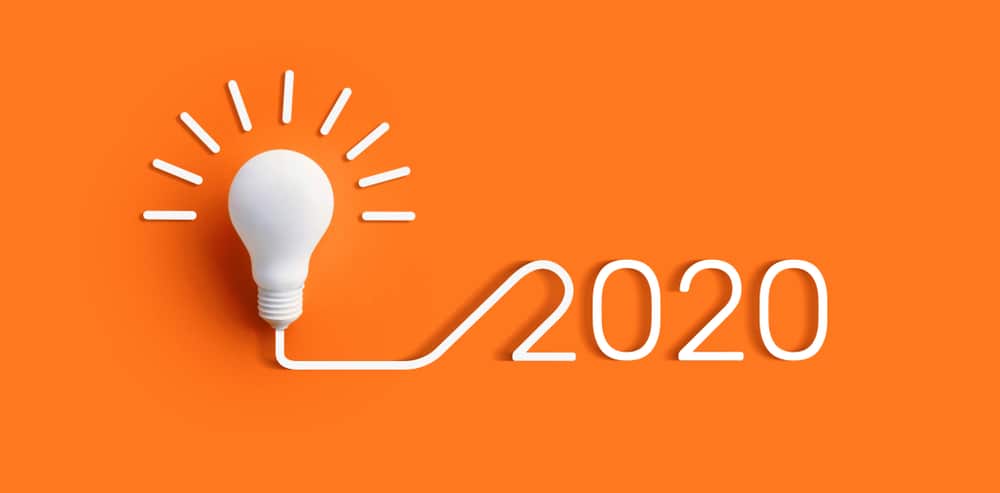
Retail technology once revolved around creating quick and efficient transactional moments. Continue reading “Four transformative retail marketing trends for 2020”
How retailers can create an interactive shopping experience in-store
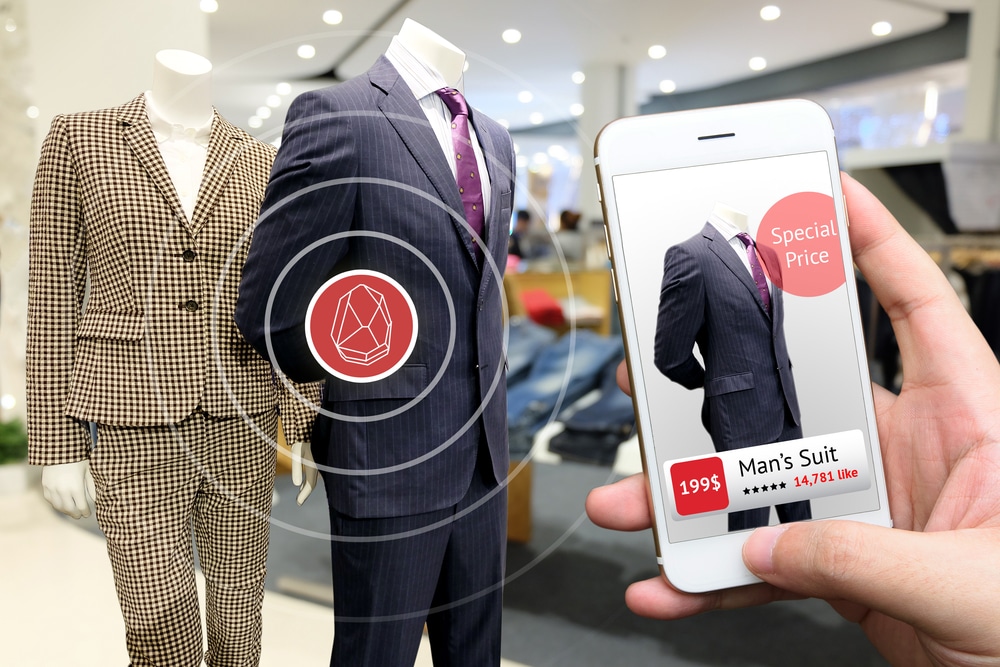
The convenience of online shopping has elevated consumer expectations for the in-store retail experience. Continue reading “How retailers can create an interactive shopping experience in-store”
The most effective marketing channels for CPG brands to reach customers
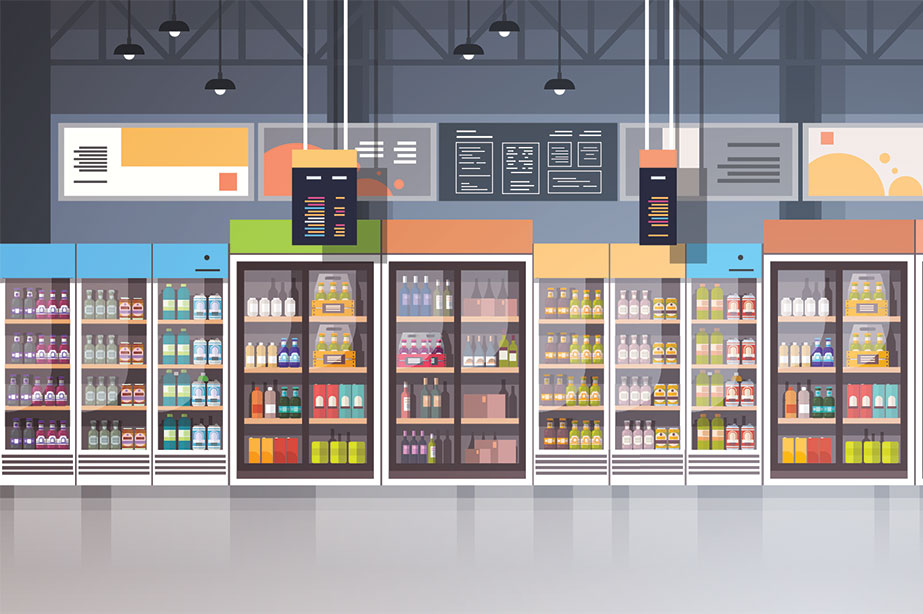
The most effective marketing channels for CPG brands to reach customers
The beauty of the omnichannel strategy is its inherent flexibility. As the market shifts, you can A/B test and integrate new marketing channels that will be most effective for your business in the coming months.
Three of the Most Effective Marketing Channels for CPG Brands
The most effective marketing channels will depend on your particular situation, but the following three strategies are currently your best bet for maximizing opportunities in digital advertising. They should definitely be on your radar if you aren’t pursuing them already.
#1: Online Paid Advertising
We’d be willing to bet you’re already doing some significant work in this channel already—but are you utilizing the most up-and-coming methods within paid advertising? PPC and display ads seem to be losing priority in the wake of bigger and better opportunities that target your most valuable customers where they spend the most time: on social media, video streaming platforms, and the online marketplace.
Paid Social
CPG brands will find that paid video ads on social media platforms like Instagram, Snapchat, and Facebook (and the newest craze platform, TikTok) are likely to bring in far more revenue than your internally-run social media campaigns themselves. The “stories” feature on each of these platforms is the perfect place for video ads to gain traction in 2020 and beyond.
Video Streaming
Streaming platforms like Hulu, YouTube, and now Facebook Watch offer a unique opportunity for CPG brands to place full-length video advertisements that must be watched to completion. It’s like broadcast advertising on steroids—because of the sheer volume of users consuming content on these platforms on a daily basis, this is one category not to miss out on.
Amazon Ads
Amazon is already the #3 digital ad seller in the United States, and eMarketer forecasts that by the end of 2021 one out of every ten digital advertising dollars will be spent for placements on this platform. CPG brands should be capitalizing on the sponsored products and sponsored display categories—the second of which is still in beta and therefore has a lot of room for growth in the coming years.
#2: Search Engine Optimization
According to Google data, 80% of shoppers say mobile searches impact their purchasing decisions in the CPG category. Anecdotally, we know that an incredibly high percentage of shoppers use their smartphones in stores to compare products and prices. Knowing this, it’s amazing how few CPG brands are taking advantage of SEO as a marketing channel.
- Prioritize your technical on-page SEO. CPG brands often maintain an inventory of tens or even hundreds of products, which makes for complex websites with thousands of unique pages—all of which need optimized meta page titles, keyword-rich H1 tags, and alt text on every image. This is a heavy lift for sure but will guarantee that your site conforms to the most foundational SEO best practices. Most importantly, do whatever it takes to streamline your website and improve site speeds. Google (and your users) will thank you.
- Create keyword-targeted blog content. Very few CPG brands maintain a regularly-published blog schedule, but there’s no reason why you shouldn’t be tapping into the content marketing channel. Figure out your most valuable long-tail keywords and target each of them with an original, well-written, and insightful blog post. Question keywords are particularly valuable for CPG brands looking to build out a SERP presence through Google’s “people also ask” feature, and they make great fodder for social media syndication.
- Streamline your eCommerce experience. Even with all of the technological advancements available today, online shopping at individual websites continues to be a frustrating experience for consumers. eCommerce brands identify the result of this frustration “cart abandonment”—but in the SEO world, this translates to high bounce rates and lowered “Google trust.” Whether you outsource your eCommerce to Amazon or run your own native shop on-site, make sure it’s glitch-free and lightning-fast to ease the customer path to purchase.
- Achieve balance with PPC efforts. Most major CPG brands secure PPC ads for keywords that contain their brand name—but 8 out of 10 undecided shoppers aren’t searching by brand names at all. They’re typing in product types or categories instead. Start pursuing keywords like “best toilet bowl cleaner for stains” or “what is the top organic skincare brand” through a mix of PPC and targeted original content. While PPC and SEO are decidedly separate disciplines, anecdotal evidence suggests that their partnership could be the most promising for increasing product awareness for CPG and other retail brands.
#3: In-App Advertising
Finally, we take a look at yet another emerging digital advertising trend—in-app advertising, which is often combined with proximity marketing and customer rewards. There’s a whole world of apps aside from social media that can help CPG brands reach low-funnel customers. Mobile games are an obvious choice. Innovative shopping apps are another.
Here’s how a few major CPG brands are already using in-app advertising to reach their goals:
Kraft
Leading up to the 2018 holiday season, Kraft leveraged Shopkick to deliver targeted advertising content to customers. Through in-app videos, holiday-themed content, and recipes, Kraft managed to increase their pre-shop consideration metrics and drive over 18 million total campaign impressions. Fifty-five percent of purchasing customers report they weren’t intending to buy the Kraft products before interacting with them within the Shopkick app.
Rimmel-London
In order to cut through the noise of the cosmetics aisle, Rimmel-London used in-app advertising through Shopkick to increase their reputation as a top beauty brand. Customers were reached and rewarded through proximity messaging and an innovative “trial in aisle” program that resulted in a 5:1 ROI. Thirty-eight percent of those new customers had never used Rimmel products before—which resulted in 14% market share stolen from their closest competitors.
Tyson
Tyson also increased their brand and product awareness through a partnership with Shopkick. They launched exclusive Superbowl-related content in the app to inspire customers pre-shop, and drove a significant increase in foot traffic and in-aisle engagement through targeted video advertising. This particular campaign resulted in an overall 85% video completion rate with a sales impact of over $195K in Sam’s Club stores.
Exploring the advantages of mobile marketing in retail
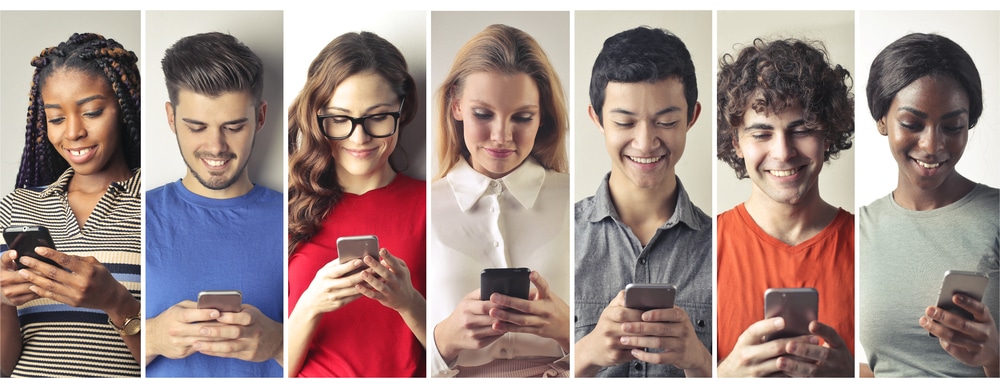
With mobile being such an inextricable part of our daily lives, it’s no wonder the advantages of mobile marketing are abundant. Continue reading “Exploring the advantages of mobile marketing in retail”
7 in-store marketing strategies to engage young consumers

If you’re looking toward the future and want to ensure your business continues to thrive in the coming decades, you have to take the predilections of young consumers into consideration. Continue reading “7 in-store marketing strategies to engage young consumers”
CPG brands should use these 4 marketing strategies to retain customers
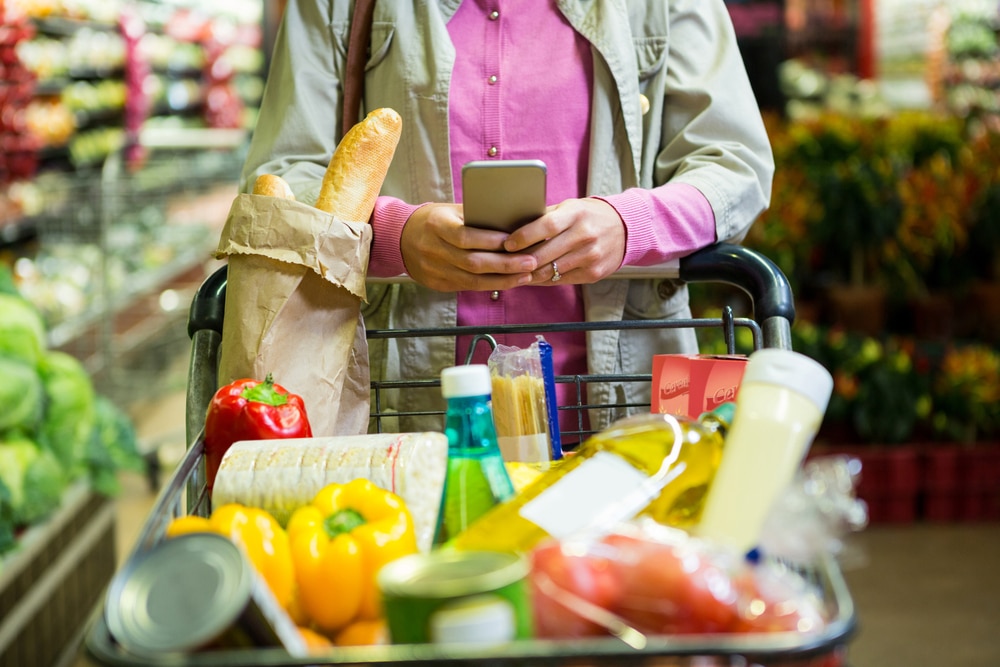
The average CPG brand counts on 0.7% of shoppers—the loyalists—to comprise 80% of their sales volume. Continue reading “CPG brands should use these 4 marketing strategies to retain customers”
4 ways to improve customer experience in retail
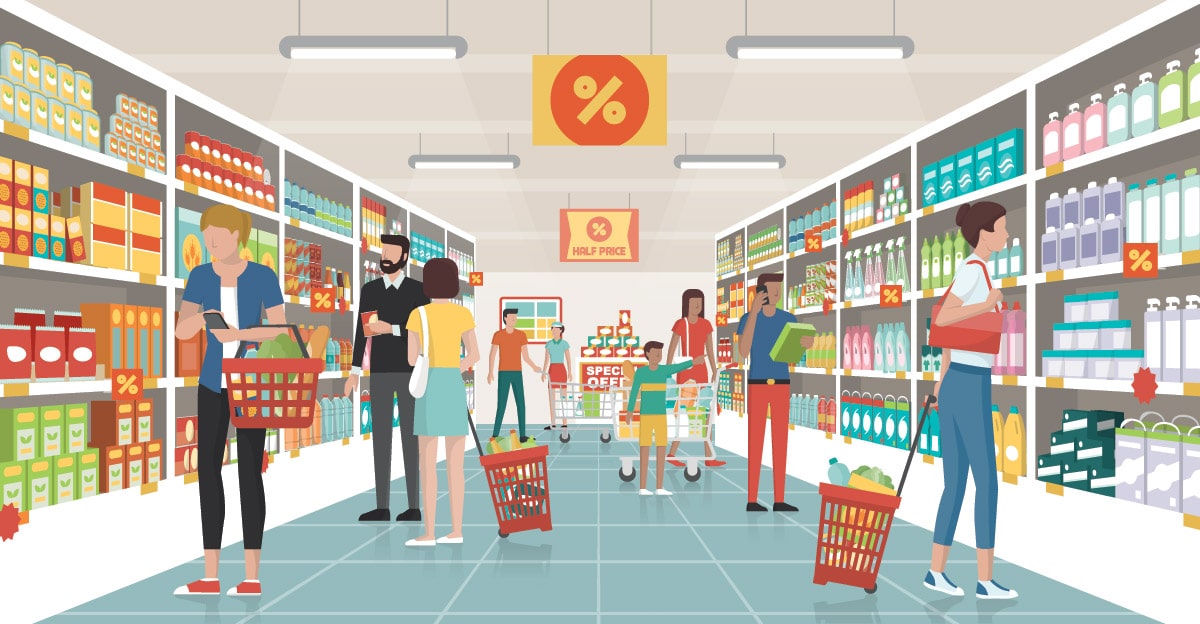
4 ways to improve customer experience in retail
With retail innovations like automation and rewards, store owners have the opportunity to reduce friction and improve customer experience across the board. Alleviating these challenges can have significant positive impacts on sales, customer satisfaction rates, and overall revenue. In a recent study of 15 enterprise retail leaders, NTT DATA Solutions found that those who prioritized reducing customer friction achieved a 48% improvement in revenue growth and a 45% improvement in net income compared to those with poor friction ratings. The following four strategies will help you replace friction-filled experiences with those that are personalized, exciting, and positive.
#1: Prioritize Speed And Convenience
Most brick-and-mortar stores are designed to strategically move customers past as many products as possible in order to get what they came for. That impulse-buy trapping strategy is quickly falling out of favor with audiences who are accustomed to online convenience and next-day shipping. As seen in the buy-online-pickup-in-store model, speed should really be prioritized above all else. Additional sales, surprisingly, are positively affected as a result.
Streamline Store Layouts
It’s time to rethink the classic milk-and-eggs strategy, where retailers put the most crucial items at the back corners of the store. Innovative store locations are putting must-have items (like the BOPIS station) right up front so customers can find what they need quickly and easily. Surprisingly, customers still end up making plenty of add-on purchases before they find their way out the door—so it pays to make things quick and efficient.
Introduce Frictionless Checkout
Checkout lines are some of the most annoying staples of CPG stores—so certain players are starting to innovate without cash registers at all. Amazon Go store locations utilize machine learning and computer vision to make convenience stores 100% more convenient. If frictionless checkout isn’t in your immediate future, consider increasing staffing at checkout to relieve pressure and improve wait times.
Optimize the BOPIS Experience
According to the same report from NTT DATA Services, 50% of surveyed stores couldn’t fulfill a same-day BOPIS order, and only 33% could fulfill an order within one hour. These are immediate opportunities to reduce friction and improve customer experience. By investing in automation and improving stocking logistics, stores can ensure that the items being ordered are in stock and ready to pick up in a timeframe that meets (or exceeds) customer expectations.
#2: Improve Omnichannel Consistency
NTT Data Systems found that a significant number of retail leaders fell behind in the area of online ordering. The worst sites required customers to re-enter processing information multiple times and complete 25% more steps before checkout. Your goal should be to create a seamless online experience that remains consistent with the convenient experience you provide in stores. That way, customers get a far more positive omnichannel experience from your brand and are more likely to offer their loyalty.
- Invest in an updated website. Too many retail sites are cluttered, clunky, and slow to load—all of which contribute to customer frustration and cart abandonment. Investing in updated eCommerce strategies and a streamlined sitemap will do wonders for improving customer satisfaction scores and increasing online sales.
- Make returns and exchanges easier. One of the biggest perks of ordering from an eCommerce giant like Amazon is the speed and efficiency of returns and exchanges. While your business may not be able to reach the heights of speed at Amazon, you can certainly make returns easier with generous policies and convenient in-store options.
- Resolve billing problems quickly. A report on enterprise fashion brands found that problems with billing, multiple charges, and trouble resolving credit card issues ranked high on the list of customer complaints. You should aim to make your online bill pay system as smooth as possible to avoid these high-tension moments.
#3: Revolutionize Staff Training
Believe it or not, staff interactions (or lack thereof) often produce the highest volume of friction-filled moments for customers in retail stores. All too often, it’s the sheer lack of adequate staffing that leads to customer annoyance and refusal to return. Increasing staff numbers at high-traffic times can significantly improve customer satisfaction scores. The rest of the time, improvements in retail technology and staff training can ensure that every customer need is met in a more-than-satisfactory manner.
Increase Automated Tools
Well-equipped retail apps offer customers the opportunity to carry a store associate in their pocket. From in-store mobile navigation to digital store maps and mobile price checks, these automated tools can make a customer’s path to purchase much quicker and easier. Try implementing some of these automated tools in your stores, or experiment with beacon technology and digital store map kiosks to help customers get what they need.
Experiment With Mobile Registers
In lieu of frictionless checkout, many major retailers are launching teams of mobile registers—staff members who roam the aisles and can complete purchases directly from the shelves. This is a particularly timely solution for the months leading up to the holiday season, where frantic shoppers are looking for any way to avoid lines. Advertise your new mobile register offering, and you’ll likely snag a few desperate time-conscious shoppers.
Prioritize Conflict Resolution
Conflict resolution training materials are ever-evolving for staff members at retail stores—but they’re even more important now in the age of instant gratification. Customers expect conflicts to be resolved swiftly and courteously, and to be offered some form of compensation in return for their trouble. By offering plenty of staff members and training those employees on proper conflict resolution techniques, you’ll go a long way toward ameliorating and pleasing disgruntled customers.
#4: Create Innovative Experiences
Reducing customer friction is only half the battle when it comes to improving customer experience in retail. After you’ve created a truly seamless experience, customers still expect more. They’re looking for an experience—a memory—that will help them feel aligned with your brand. Innovative retail experiences create brand advocates. And through the omnipresence of social media, brand advocates are what will improve your sales the most.
Launch Experiential Concepts
Experiential retail stores are becoming increasingly popular, and for good reason. They’re exciting, new, and perfectly Instagrammable. Experiential concepts like the House of Vans in London or the Nike House of Innovation in New York offer customers exactly what they’re looking for: an attraction, and not just a retail store. Try launching a pop-up experiential concept to see how much buzz your brand can generate.
Personalize Your Marketing
Go beyond birthday coupon emails and offer your customers a personalized marketing experience backed by the latest mobile technology. One study found that personalized customer loyalty programs brought a 71% satisfaction rate and brought in 2.7 times more members than those that weren’t highly personalized. These strategies allow you to connect directly with your most loyal customers—those who opt-in because they want more from your brand.
Offer Truly Unique Rewards
A powerful rewards program can help beef up your marketing strategy and offer customers high-value rewards that don’t rely on slashing prices. With a third party app like Shopkick, you can reward customers for going on adventures in your stores and opting into targeted advertising experiences. Shopkick rewards program partnerships often see impressive ROI’s and a significant
How can brick and mortar stores compete with online retailers?
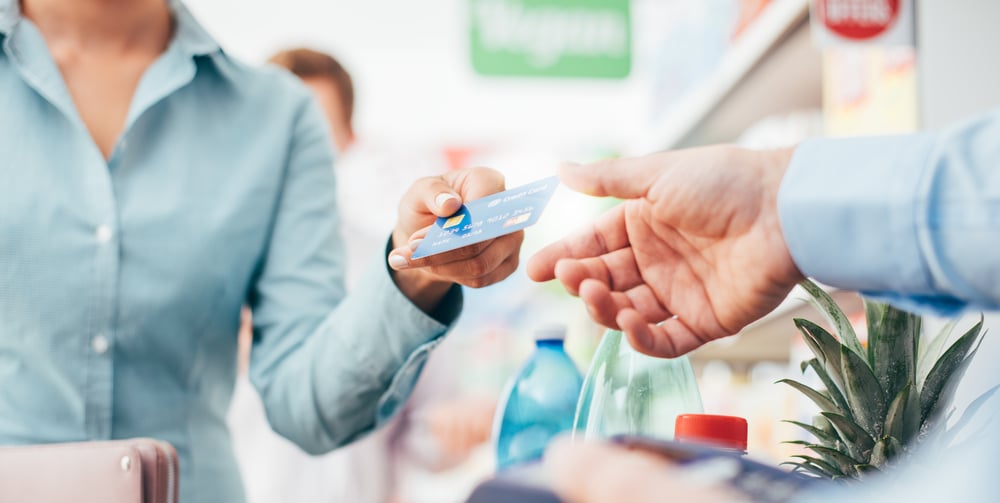
The retail powerhouses of America have a synergistic relationship between their brick-and-mortar stores and eCommerce sites.
Continue reading “How can brick and mortar stores compete with online retailers?”
Learn how to increase footfall in your retail store
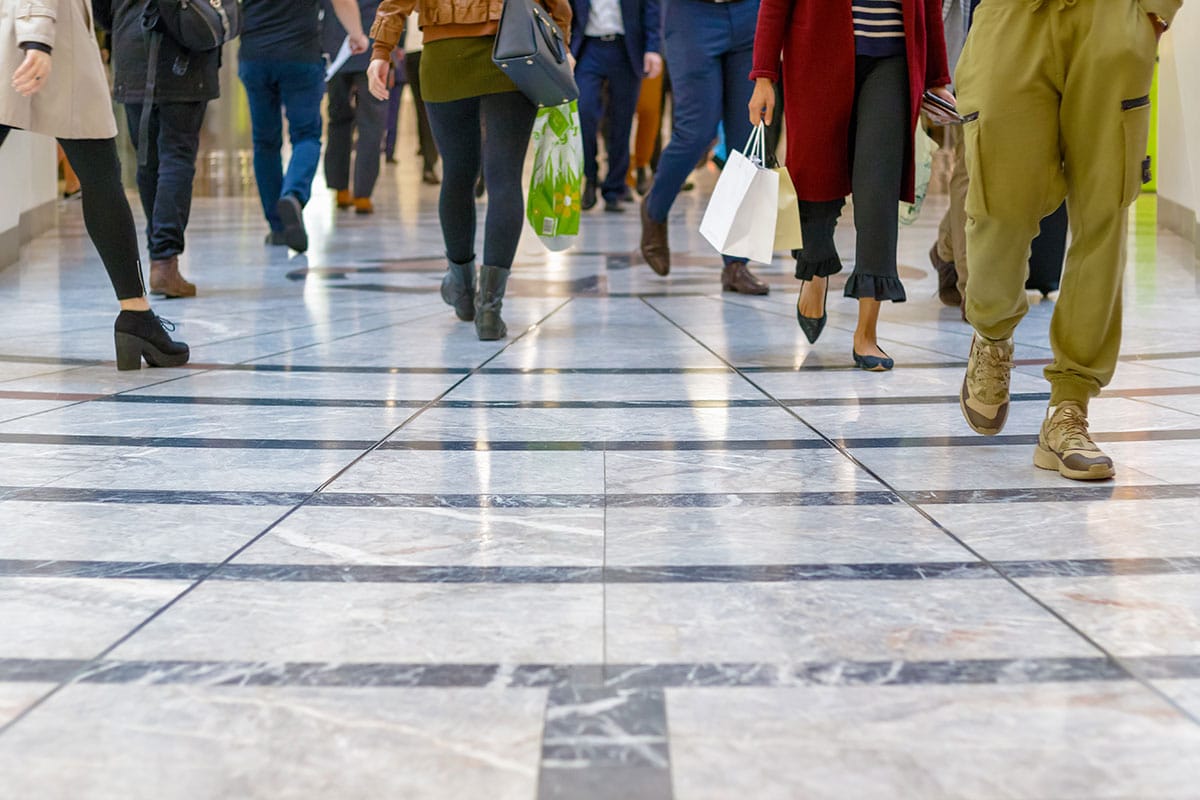
Learn how to increase footfall in your retail store
The good news is, traffic numbers in CPG and other retail stores haven’t been falling as consistently as popular media sites report. Research shows that U.S. foot traffic actually maintained steady growth in the months since Q4 2017, and has only recently started to turn back down from its highest peak.
This trend is clearly variable—which indicates that if you can figure out how to increase footfall in your retail store, you have the potential to make a big impact. The following strategies will help your brand to attract, retain, and grow the number of in-person visitors to your stores so you can experience all of the associated benefits.
Invest in Location-Based Marketing
Geofencing, personalized store greetings, and other location-based marketing strategies help retailers and brands harness the immense power of mobile location services. Location-based marketing technology draws customers into store locations and incentivizes them while they’re there—assuming you can overcome the big opt-in challenge.

Utilizing All of the Available Tools
According to a recent report, 84% of companies use location-based marketing to target ads or promotions, and 94% plan to do so in the future. To get the most bang for your buck, make sure you’re balancing your efforts between all the potential strategies available—including geofencing, geotargeting, and geoconquesting—and utilizing tools across all available channels.

Seeing the Power of Greetings
Walmart may be phasing out its staff of blue-vested greeters, but that doesn’t mean at-the-door greetings aren’t valuable. Location-based marketing takes that concept into the future by sending shoppers personalized greetings when they enter retail stores. Customers get a personalized marketing experience, and brands get their products top-of-mind.

Getting Customers to Opt-In
The biggest challenge of location-based marketing is getting customers to turn on their notifications. Proximity messaging only reaches customers who opt-in, and a significant number of people restrict all notifications on principle. Shopkick offers one innovative solution—as a third party rewards app that offers rewards for store visits, we reward shoppers for opting in, in the ways that matter most to them.
Try Buy Online Pick Up In-Store
This strategy strikes the perfect balance between online convenience and in-person immediacy. Buy-online-pickup-in-store strategies are so effective, 68% of surveyed consumers say they made multiple such purchases in the past year.
- Situate your BOPIS station at the front of the store. Customers are already going to make additional purchases while they’re inside—so don’t make it harder for them! Keep all of your BOPIS activity close to the door and minimize queuing to create a smoother customer experience.
- Optimize logistics for faster pick-up speeds. Work to streamline your notification system so customers are notified that their purchase is ready within three hours or less. And ensure that their orders are ready when you say they’re ready. The faster your pick-up speed, the greater your sales revenue.
- Incentivize customers with future deals. BOPIS hasn’t yet reached full saturation in the marketplace, and certain customers may require a bit of coaxing to give the system a try. Forty-six percent said they’d be more likely to use BOPIS if they were offered future deals as a bonus.
Offer Rewards—Not Flash Sales
Markdowns may entice customers to get in the door, but they also eat heavily into profit margins. Certain rewards programs and apps offer customers even more satisfying rewards that actually have a positive impact on your bottom line.

Kraft
Leading up to the holiday season, Kraft partnered with Shopkick to inspire consumers with in-app recipes and winter-themed content. This drove customers to Walmart stores. They were rewarded for physically interacting with the products and purchasing all three of the featured baking items. This campaign raked in 18M+ impressions and increased sales from 55% unplanned purchases.

Purina
Purina used Shopkick to deliver aspirational ad content to app users. Using proximity messaging and branded greetings, Shopkick reminded users of the product as they got closer to the store. With small incentives, Purina managed to stay top-of-mind during habitual shopping trips and inspired shoppers to try their new product—with 85% of shoppers indicating that their choice was motivated by Shopkick.

Rimmel London
Targeted ads in the Shopkick app helped paint Rimmel London as a top beauty brand to their most valuable customers. Proximity messaging reminded shoppers of their product line and incentivized customers to see past the clutter of the cosmetics aisle and choose Rimmel London for their next purchase. Thirty-eight percent of those shoppers had never used Rimmel London products before.
5 innovative ideas to increase sales in retail stores
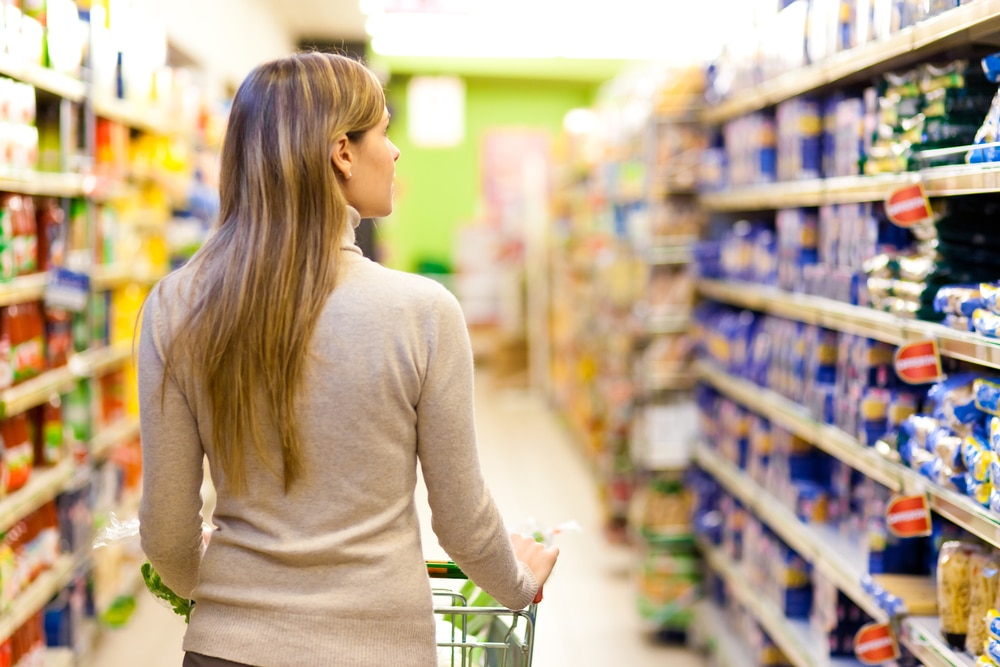
According to the National Retail Federation, the economy is in good financial shape, and so are consumers. Continue reading “5 innovative ideas to increase sales in retail stores”

